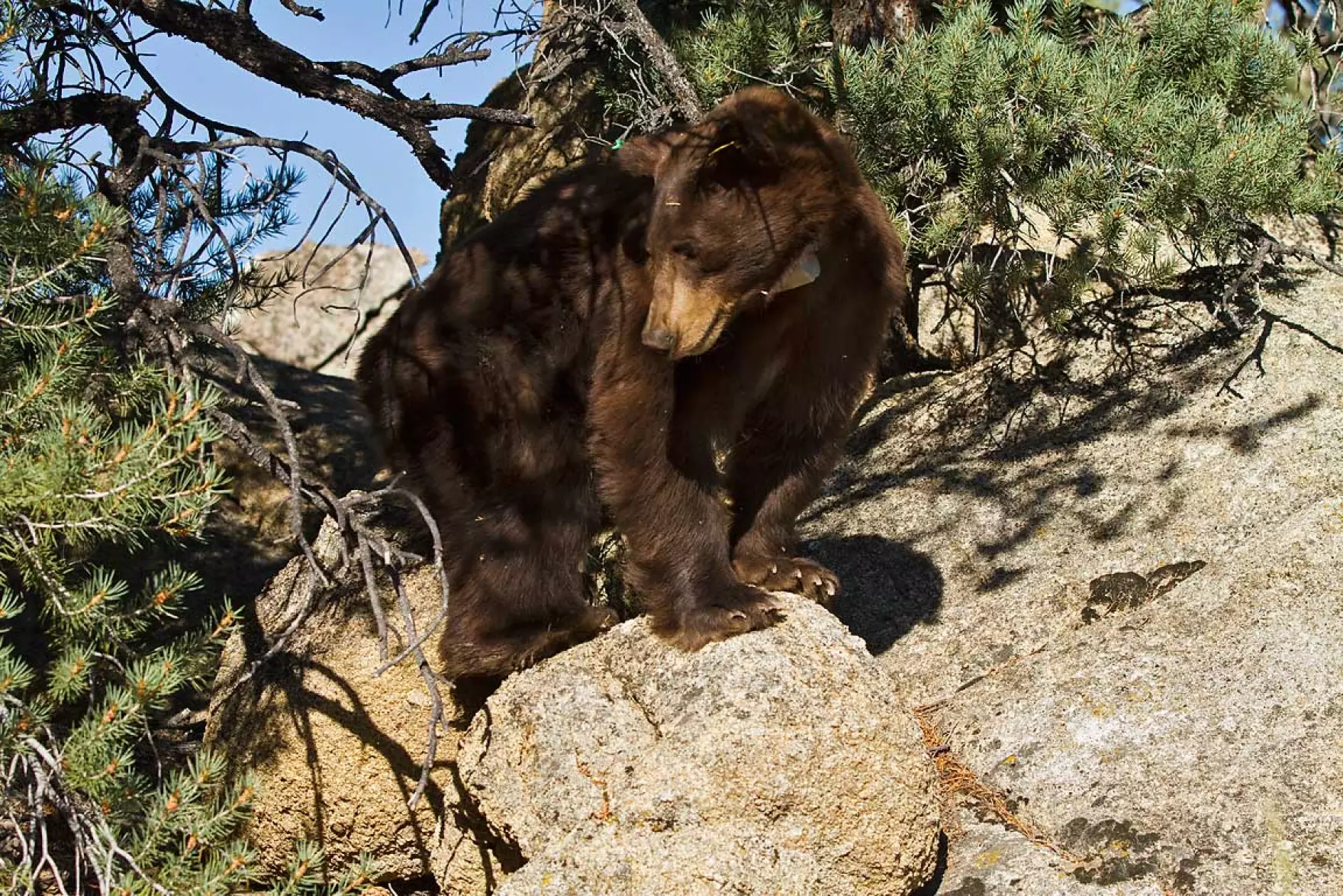Above: Black bears are reestablishing themselves in northern Nevada, increasing the number of encounters between bears and people. Credit: Derek Reich, Nevada Department of Wildlife/Nevada Today.
This story was shared with permission from KUNR Public Radio. For an audio version of the story, please visit the KUNR website.
Animal skulls from armadillos to crocodilians lined the shelves of wildlife ecologist Dr. Kelly Stewart’s office at the University of Nevada Reno. Nestled between two of these sat a plastic bag containing an ancient piece of technology.
Stewart reached into the crinkly plastic bag and pulled out a rusty bell on a disintegrating leather strap. She explained this was an old wildlife tracking collar from the 1950s.
“Little old collar. This was from, I think ‘54 was the study,” said Stewart. “We go from that to nowadays, when you get very precise GPS locations on animals, within a couple meters of their location.”
The days of listening for bells in the wilderness have long since passed. Now Stewart and her colleague Heather Reich, a wildlife biologist and co-author of their recently published research paper, use data from modern radio collars to study black bear dens in Nevada.
“That collar provides a lot of information, and one of the informations that a collar on a bear provides is where they spent their winter. So that allowed us to go and gather that data and also mark exactly where those den sites were,” Reich said.
Reich said hibernation, or denning, is an important evolutionary adaptation in bears. When food becomes scarce in the colder months, it allows bears to reduce the amount of calories they use, and sleep through the winter. It is also especially important for mother bears.
“It’s also the time that female bears bear their young, and that young can safely nurse and grow in the safety of a den before they have to go out in the big, bad world and grow up to be real big bears,” Reich said.
Reich and Stewart recently published their research about black bear den selection in the journal Ecology and Evolution. They found quite a few factors went into den selection, but that it mostly came down to what was available.
They found that in the Sierra Nevada and Carson ranges, bears often make dens in the bases of hollow trees. In the Pine Nut range though, where smaller Juniper trees are dominant, bears opt for rock pile dens.
Their research also found that bears prefer denning in rugged, steep terrain.
“They like a little steeper slopes from what our stuff showed, a little higher elevation. There’s a lot of hypotheses for that,” Stewart said. “And one of the ones was that as things start melting, if it was on a steeper slope, it didn’t tend to get as much water coming into it.”
Their research also looked at the times that bears enter and exit their dens and found a difference between male and female bears. Females black bears enter their dens earlier than males, normally around Dec. 6, as opposed to Dec. 16 for their male counterparts. The females also stayed in their dens longer on average by about two weeks – female bears stirred from their dens around the end of March, but males tended to rise in the middle of the spring months.
Stewart said the males and females also prefer different locations for their wintery abodes.
“The males really avoided the roads with placement of their den sites. And so there’s this kind of distance from the road that they don’t really occupy, and we had more females moving into those spots,” Stewart said.
She said this is likely because males can be dangerous for cubs, so mother bears will avoid them to protect their young.
According to their research the temperature also had a strong effect on when male bears come out of hibernation.
“A couple days, couple nights where it didn’t drop below freezing, was a really good trigger for the males to come out,” Stewart said. “The females stayed in a little longer, probably waiting for the young to develop enough that they were ready to come out.”
A few things were consistent for both male and female den sites though. Almost all dens had a room with a view – meaning they could see long distances from the entrance – and most dens were reused each year, but almost never by the same bear.
Both Reich and Stewart said the research provides a baseline for understanding how bears use habitat and will also give researchers something to look back on as seasonal temperature changes.
But in the end for bears looking for a place to hibernate it comes down to the basics.
“They like soft stuff to sleep on. So a lot of these dens, you know, depending on what was available, they pull in leaves or pine needles or things of that nature to kind of bed down and have a little cushion to snuggle up on,” Reich said
Kat Fulwider is the 2024 fall intern for KUNR and the Hitchcock Project for Visualizing Science.






